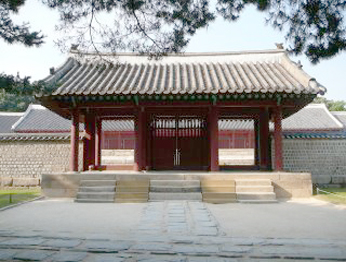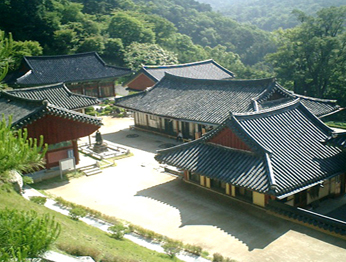HAEINSA TEMPLE

Sharp Travel & Tours Inc.
Contact Info
Telephone - 847.759.8813
Toll Free - 1.888.To.Sharp
Email - sharptour@hotmail.com

Statement of Significance
The World Heritage Committee inscribed this site on the World Heritage List on the basis of criteria (iv) and (vi), in recognition that the Korean version of the Buddhist scriptures (Tripitaka Koreana) at the Haeinsa Temple is one of the most important and most complete corpus of Buddhist doctrinal texts in the world, and is also outstanding for the high aesthetic quality of its workmanship. The buildings in which the scriptures are housed are unique both in terms of their antiquity so far as this specialized type of structure is concerned, and also for the remarkably effective solutions developed in the 15th century to the problems posed by the need to preserve woodblocks against deterioration.
Haeinsa, the Temple of a Vast Sea of Meditation, is nestled part-way up Mt. Gayasan, Hapcheon-gun, Gyeongsangnam-do Province. It was built by Suneung and Ijeong in the 3rd year of King Aejang of the Silla Kingdom (802). The Goryeo Dynasty's founder, King Taejo, designated it as a state temple. Today it has 75 subordinate temples and 14 hermitages scattered nearby.
When the nation was imperiled by the Mongolian invasion at the end of the Goryeo Dynasty, King Gojong, who had taken refuge on Ganghwa Island in 1230, initiated the laborious carving of the Tripitaka Koreana woodblocks, hoping to repel the barbarians with the help of the divine providence of Buddha. The project took 16 years, from 1236 to 1251. The Tripitaka Koreana woodblocks are testimony to the pious devotion of both king and people. They were first housed in Seonwonsa Temple on Ganghwa Island, moved to Jicheonsa Temple in the 7th year (1398) of King Taejo of the Joseon Dynasty, and the next year moved again to Haeinsa Temple, making it a religious cradle for national peace and prosperity from that time on.
In the temple compound are two main depositories and two small depositories. Of the two main depositories, the one on the south is Sudarajang, the Hall of Sutras, and the one on the north Beopbojeon, the Hall of Dharma. Each measures 15 kan (1 kan is about 6 feet) across the front and 2 kan on the side. They were designed to optimize the preservation of woodblocks with the proper ventilation, temperature, and humidity by taking the best advantage of natural conditions and scientific architecture. Thus the woodblocks have been kept in impeccable condition, which enabled the depositories to be registered on UNESCO's World Cultural Heritage List in December of 1995.
Tripitaka is a Sanskrit word made up of tri, "Three " and pitaka, referring to the gyeong, yul, and non, which respectively are discourses with the Buddha, the Buddhist laws of ascetic life, and commentaries on the sutras by eminent monks and scholars. Known in Korean as Palman Daejanggyeong (Great Collection of Buddhist Scriptures in Eighty Thousand Woodblocks), the Tripitaka Koreana consists of 81,258 woodblocks. Amazingly, there is no trace of errors or omissions on any woodblock. To guard against insects, decay, frame distortion, cracks, and humidity, the material of the woodblocks was treated for years by a special process. In terms of accuracy, beauty of font style, carving skill, and volume, the Tripitaka Koreana is recognized as the most valuable existing Buddhist canon carved in Chinese characters. It has been a jewel for the Japanese, who modeled their Taisho Shinshu Daizokyo after the Korean edition. The Chinese also imported copies of the Korean edition.

Please visit www.unesco.org for more information about UNESCO.
UNESCO Properties of Korea
© 2008 Sharp Travel and Tours Inc.